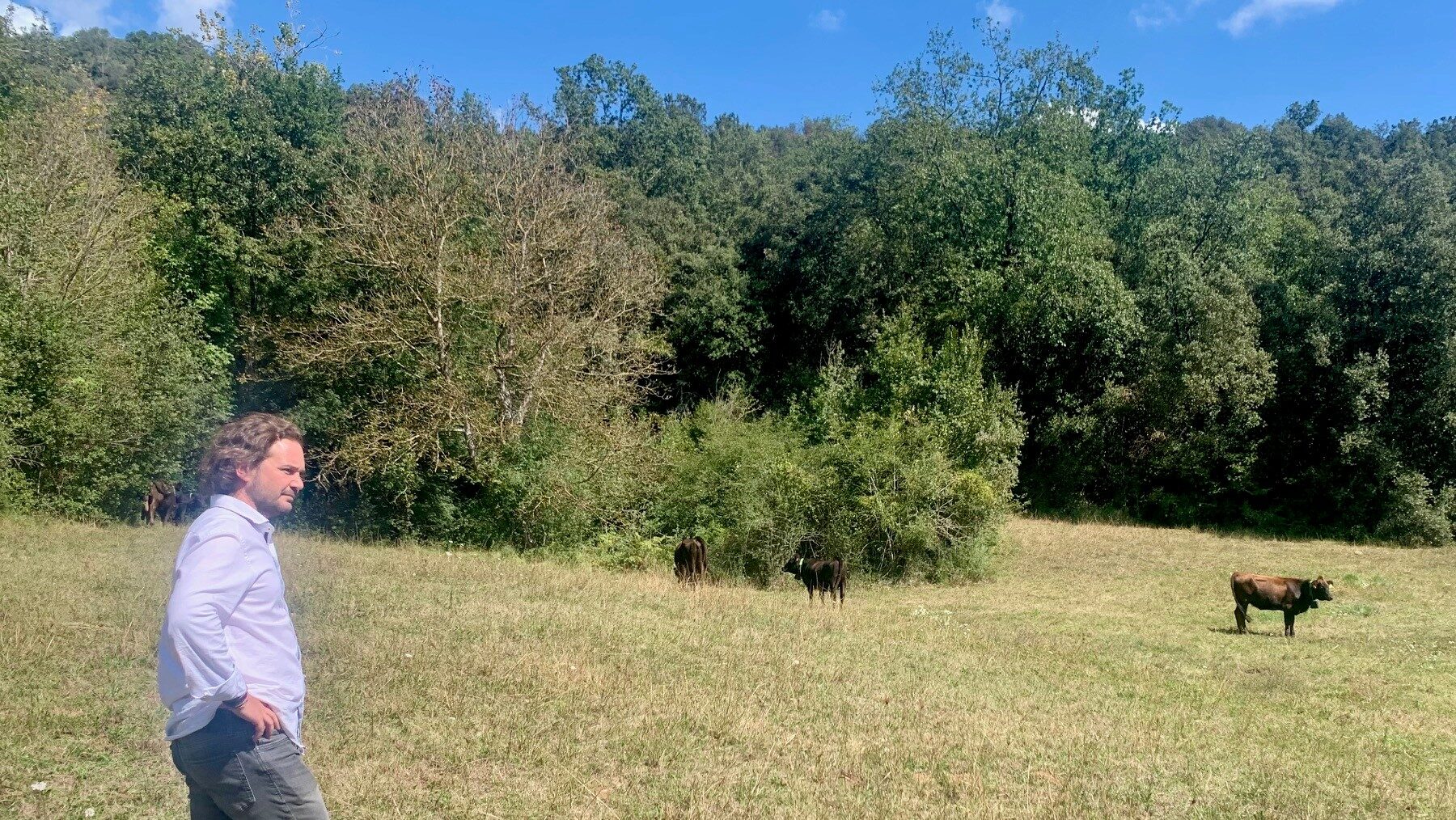The European organization EIT Food has collected the first concrete results referring to the regenerative agriculture in Spain and are very encouraging. There are more than 400 national farms that have adopted this sustainable and economically viable method.
This method reduces emissions, promotes biodiversity and makes the soil the protagonist. The food of the future depends on extending this practice among the primary sector. To achieve this, workshops with theory and practice are promoted in several autonomous communities. At its end, farmers and ranchers can continue with personalized advice.
EIT Food has taken the next step by involve the entire agri-food value chain in regenerative agriculture. The first results have already been collected: 38% of farmers have abandoned deep tillage, 17% have abandoned the use of nitrogenous mineral fertilizers, 12% no longer use chemical phytosanitary products, among others. A full report will be released before the end of the year.
4 years of work towards regenerative agriculture in Europe
After four years working in promote regenerative agriculture in Southern Europe – and now also in the East and Center of the continent-, the European organization EIT Food already has concrete results that demonstrate the environmental and economic viability of this way of understanding the primary sector.
Almost 400 farms have delved into these practices through courses, workshops and mentoring programs. Furthermore, Begoña Pérez Villarreal, general director in Southern Europe, advances some conclusions: “60% of farmers has improved the level of organic matter in the soil; 68% have improved their soil carbon levels.

And, furthermore, 38% of them have abandoned deep tillage or have reduced the number of passes by more than 50%; he 17% have abandoned the use of nitrogenous mineral fertilizers and 12% have abandoned the use of chemical phytosanitary products.”
There are numerous arguments in favor of regenerative agricultureand the European organization has become one of its main promoters. This method is based on a comprehensive or holistic vision, and achieves proven results: it reduces emissions, promotes biodiversity, makes the soil the main protagonist and improves profitability after a few years. However, it still has great room to expand among the European primary sector, and specifically in Spain.
Through your programa RAW! (siglas de Regenerative Agriculture Works), more than one hundred farmers and ranchers from Spain, Portugal and Italy have received advice, which is already applied to 30,000 hectares in these three countries. Almost 60% of queries are related to vineyards, olive groves, fruit trees and livestock.
The program includes face-to-face training and tutoring on farms as diverse as olive and almond groves on a farm in Constantina (Seville), or fruit trees and orchard land in Fraga (Huesca).
In addition to viticulture and regenerative cereal in Fresnillo de las Dueñas (Burgos) and Alcalá de los Gazules (Cádiz) or the regenerative production of milk and meat on pasture in Girona and in Maeztu (Álava), among others. “Regenerative agriculture does not only imply economic benefits. By improving the quality of the soil, the agricultural operation is much more productive than before, when working with conventional methods,” explains Begoña Pérez Villarreal, general director of EIT Food in Southern Europe.
Workshops in 2024 throughout Spain
This year a series of training sessions are being organized in several autonomous communities in Spain: Aragón, in the town of Cerveruela; in Galicia (in Ribadueme, A Coruña), Asturias (Triongo), Navarra (in Oskotz), Cantabria (in La Canal), Ibiza (Santa Gertrudis de Fruitera) and in the coming weeks other formations will be added in more Spanish autonomous communities, such as Murcia.
EIT Food started this program in 2020. It is more related to measuring the impact of regenerative practices than a training-only project. “Advising farmers allows them to generate knowledge, disseminate it and disseminate it to different actors such as industries, other professionals, cooperatives and even consumers,” says Amparo San José, Senior Regional Business Creation Manager at EIT Food. The key is to “demonstrate that the proposed business model is viable from an environmental, social and economic point of view.” both for the farm and for the entire agri-food ecosystem”.
In total, more than 1,800 farmers have attended one of the courses to date. They are not only developed in national territorybut also cover other Mediterranean countries such as Italy, Greece or Portugal, and other Eastern European countries such as Bulgaria, the Czech Republic, Poland and Slovakia, among others.
To disseminate knowledge and educate in the use of sustainable agricultural practices, EIT Food has also published different regenerative agriculture manuals in Mediterranean regions, crop-specific guidelines designed to help farmers transition from conventional or organic production systems to regenerative agriculture.
Capture 34 million tons of CO2
This method includes numerous practices based on sustainability and circularity of resources. The objective is for the crop itself to return its elements of fertility, biodiversity and nutrients to the soil, so that it retains all its capabilities. To achieve this, certain procedures are used such as minimizing tillage and, in general, any disturbance of the terrain. At the same time, it reduces dependence on external inputs, favoring recycling and circular systems.
The Regenerative agriculture establishes rotational grazing systems on the farms and promotes the regeneration of pastures, which translates into a greater amount of grass produced. As they are more fertile, the soils have a greater water retention capacity, and are also capable of retaining atmospheric carbon.
The advantages in the ecosystem go even further: on a large scale, it is possible to improve the situation of the hydrographic basins and the resilience to extreme weather events and climate change. The farms improve the efficiency of their processes, which translates into greater profitability after a few years, and quality, sustainable and accessible food is produced for the entire population.
As relevant data, in Europe 10% of greenhouse gases come from agricultural production. It must be taken into account that, By using regenerative agricultural practices, up to 34 million tons of CO2 could be captured in Spain annually, the equivalent of 15% of the country’s total annual emissions (around 300 million).
Navarra 360º
Since 2020, EIT Food has worked mainly with small farmers and cooperatives. But, in its objective of transforming the sector in Europe, it has begun to involve the entire value chain, including large corporations.
The most significant example is the Navarra 360º project, in which up to 200 small farmers will participate in the next three years, along with three multinationals: Danone, Intermalta and Cargill, which will ensure the purchase of regeneratively produced cereals in a wide area of 20,000 hectares. Banking entities, technology centers and local institutions have also joined this pioneering initiative in Europe.
This pioneering project will allow the accumulation of numerous indicators on the effects of regenerative agricultureboth related to economic profitability and the carbon footprint, CO2 emissions and biodiversity, among others.
Two cases in Girona
Among the cases of farms that have already started regenerative practices There are two successful farms in Girona: La Selvatana (dedicated to producing milk and dairy products), run by Ana Serra, and Mas Bastons (with beef cows), run by the brothers Josep María and Miquel Bastons.
Although they have come from different realities, they share conclusions regarding the results: a notable improvement in the quality of soils and pasturesthe way of working with livestock, the drastic reduction in the consumption of inputs, and ultimately an improvement in the quality of its production and an increase in economic profitability.
Regenerative agriculture and livestock have proven to be viable options so that when producing there is no excessive wear and tear on the soil, it is not necessary to contaminate the substrates or water and it can be produce sustainably and profitably.

